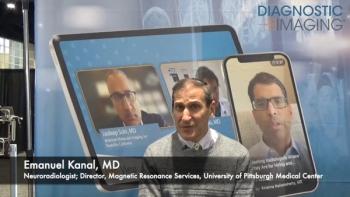
Interventional Radiology-Led Study Shows Significant Limb Salvage Benefits with Transcatheter Arterialization
For patients with no-option chronic limb-threatening ischemia (CLTI), transcatheter arterialization provided over a 25 percent higher amputation-free survival rate over standard medical management at one year, according to research presented at the Society of Interventional Radiology (SIR) Annual Scientific Meeting.
Transcatheter arterialization of the deep veins (TADV) facilitates significantly improved outcomes in patients with chronic limb-threatening ischemia (CLTI) who are not eligible for open or endovascular treatment, according to new research presented at the Society of Interventional Radiology (SIR) Annual Scientific Meeting.
For the study, researchers employed propensity-score matching to compare TADV (LimFlow System, Inari Medical) versus standard medical management in 228 patients with CLTI who were not eligible for open or endovascular treatment (also referred to as patients with “no-option” CLTI).
The study authors found that patients in the TADV cohort had a 16.8 percent higher limb salvage rate (74.6 percent vs. 57.8 percent), a 15.3 percent higher survival rate (86.4 percent vs. 71.1 percent) and a 25.8 percent higher amputation-free survival rate (64.9 percent vs. 39.1 percent).
“TADV was associated with significantly improved limb salvage, survival, and amputation-free survival at 1 year compared to contemporary benchmark for no-option CLTI patients,” wrote lead study author and interventional radiologist Nicholas Petruzzi, M.D., FSVM, DABR, who is affiliated with Atlantic Medical Imaging in New Jersey, and colleagues.
(Editor’s note: For related content, see “
Findings from the research, which garnered “Abstract of the Year” honors with three other abstracts presented at the SIR conference, also revealed that TADV was a cost-effective option that may increase life expectancy in patients with no-option CLTI by more than two years in comparison to standard medical management.
“Over a patient’s lifetime, TADV added 1.09 (quality-adjusted life years) QALYs (2.25 vs 1.16) with a resulting ICER (incremental cost-effectiveness ratio) of $33,011 per QALY gained. The total projected survival gain with TADV was 2.18 life years,” pointed out Petruzzi and colleagues.
Reference
1. Petruzzi N, Clair D, Shishehbor M, Dua A, Pietzsch J. One-year clinical and lifetime cost-effectiveness outcomes of transcatheter arterialization for no-option CLTI in the U.S. J Vasc Interv Radiol. 2025;36(3):S2-S3. Available at:
Newsletter
Stay at the forefront of radiology with the Diagnostic Imaging newsletter, delivering the latest news, clinical insights, and imaging advancements for today’s radiologists.




























